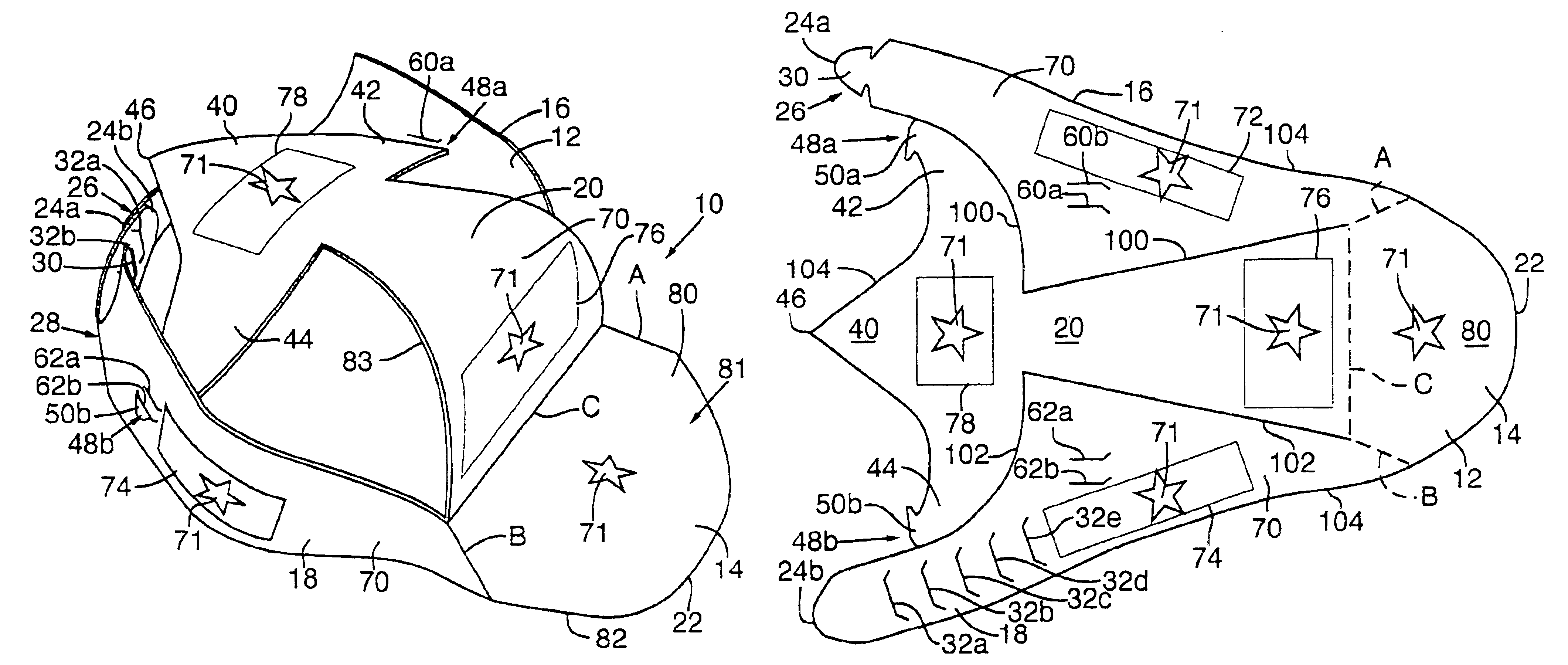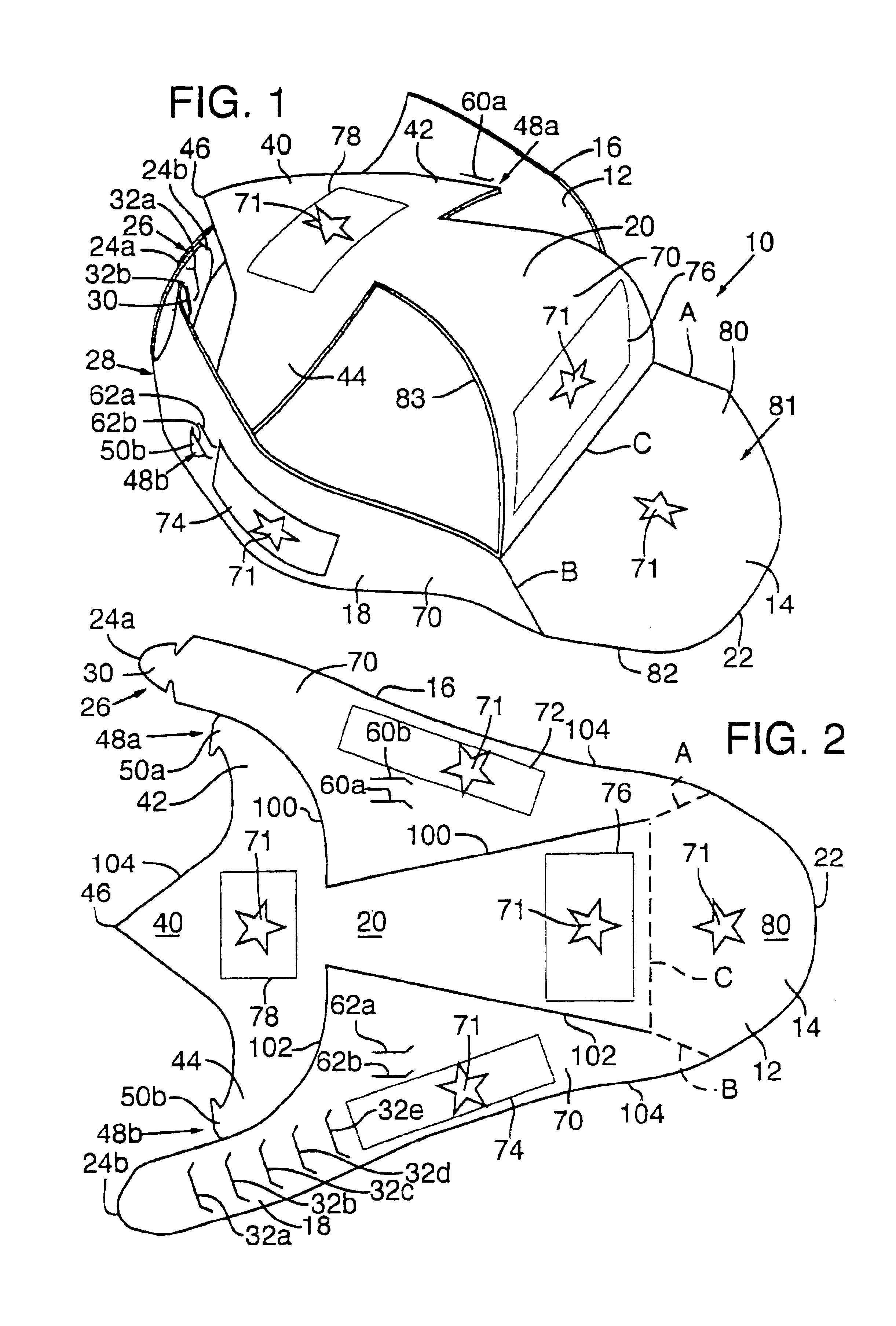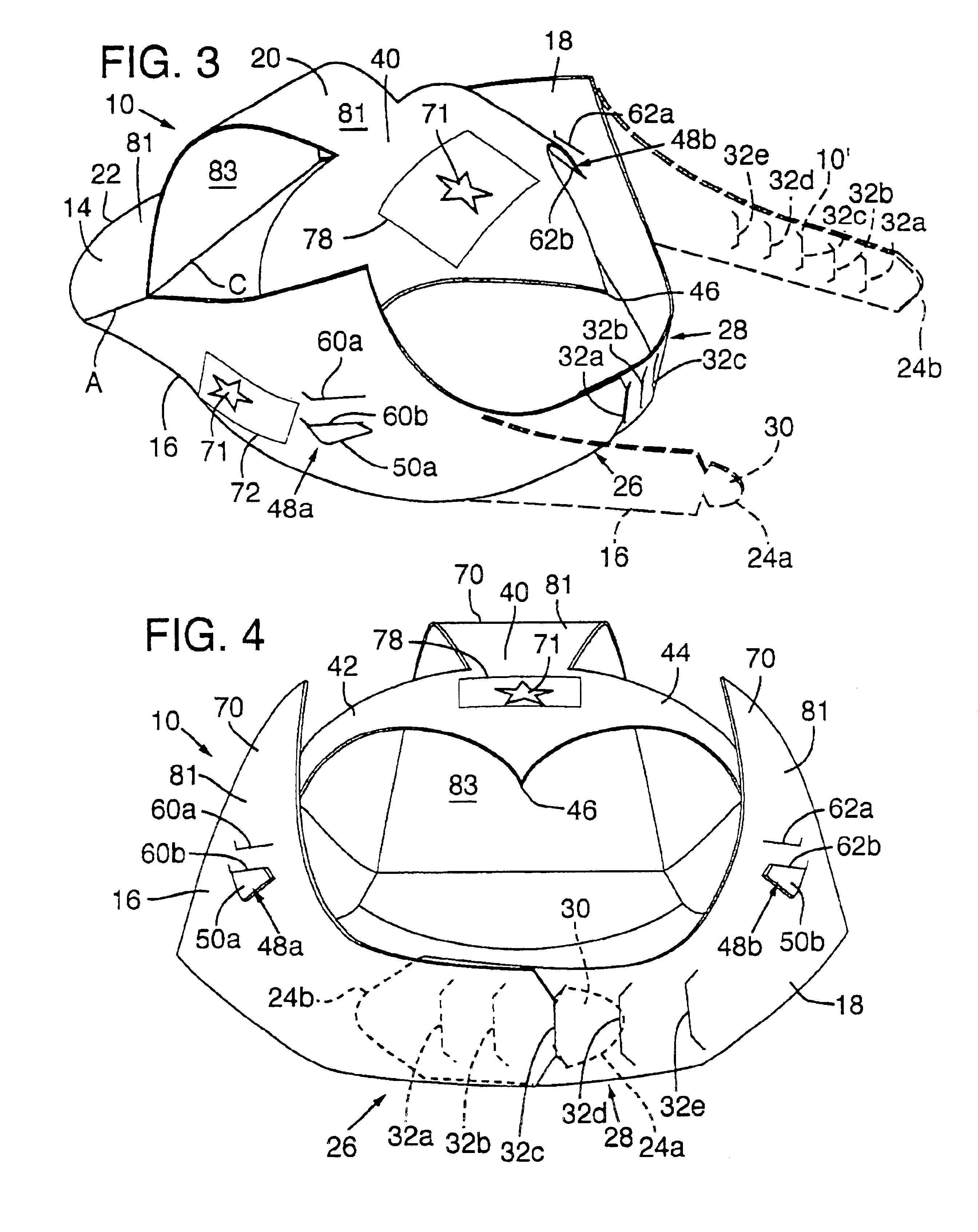These materials and methods of construction necessarily increase the costs of each hat.
In most cases, these costs do not justify the promotional and advertising benefits associated with a business widely distributing complementary hats bearing appropriate surface indicia.
Similarly, despite the protection from the sun associated with wearing a baseball hat at an outdoor sporting event, and the
high likelihood of fans wearing such a hat at the event if they had remembered to bring one from home, a vendor or advertiser is not likely to give each fan such a hat.
The hats themselves are simply too expensive to justify their use as promotional items.
However, like with traditional cloth hats, considerable manufacturing efforts must be made to construct the various components of these types of paper hats and then assemble them together.
These efforts necessarily increase the production costs of each hat.
Moreover, the final assembled paper hat is not adjustable around the headband or in the volume of the cap portion.
Also, the central strip forming the cap portion is not vividly outlined, offers only a limited surface area for displaying surface indicia thereon, and offers limited structural support, thereby limiting the rigidity of the assembled hat.
Accordingly, wearer comfort, ease of use, and the promotional benefits of the hat are compromised.
Moreover, these types of hats are not reversible by their wearers.
However, these attempts to reduce the production costs have also compromised the quality and fit of the hat.
In practice, the snug fit is uncomfortable for the wearer over prolonged use, and it places significant strain on the straps leading to their premature wear.
Moreover, there is no cap portion to protect the wearer's head from the sun and provide additional space for surface indicia.
In addition, known baseball hats and the like that are constructed from a single sheet of material have several limitations.
These types of hats require numerous die-cuts in the planar material to form the elongate strips, and they also require at least one alignment hole or the like to be
cut into each elongate strip, thereby increasing the
assembly time and related costs of each hat.
Moreover, because of spacing requirements between the various components forming each hat, a significant portion of the planar material is wasted when forming the hat.
In addition, the volume of the cap portion in this type of hat is not adjustable, and considerable time, effort, and some cases even special fasteners are required to fully assemble each hat.
In practice, a patron receiving these types of hats in unassembled form, such as at a sporting event, may find it too difficult or too confusing to assemble.
Accordingly, he may simply throw such a hat away rather than use it, thereby destroying any promotional value offered by the hat.
Moreover, the numerous elongate strips that form the cap portion of these types of hats make it difficult to place an easily viewable continuous surface indicia, such as a large logo or the like, on the cap portion of the hat.
It can be difficult for a wearer to consistently assemble and align such strips in such a manner as to prevent distracting the viewer's view of the overall logo.
Moreover, such structures to not lend themselves to being reversible, thereby precluding a wearer from selecting between two different patterns of surface indicia to display on the hat.
It can be difficult for a wearer to consistently assemble and align such strips in such a manner as to prevent distracting the viewer's view of the overall logo.
 Login to View More
Login to View More  Login to View More
Login to View More 


